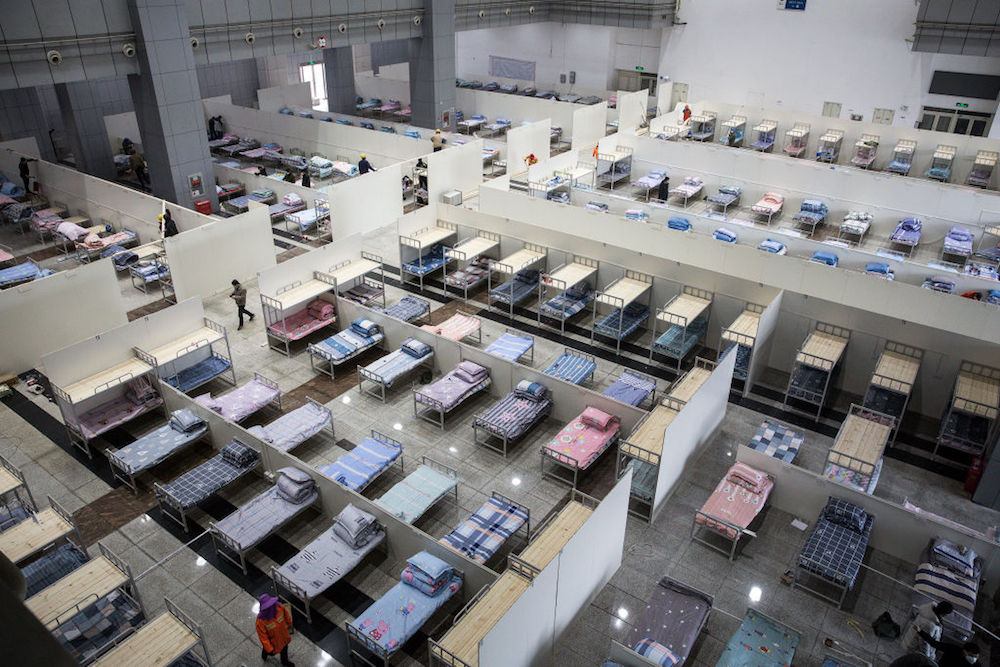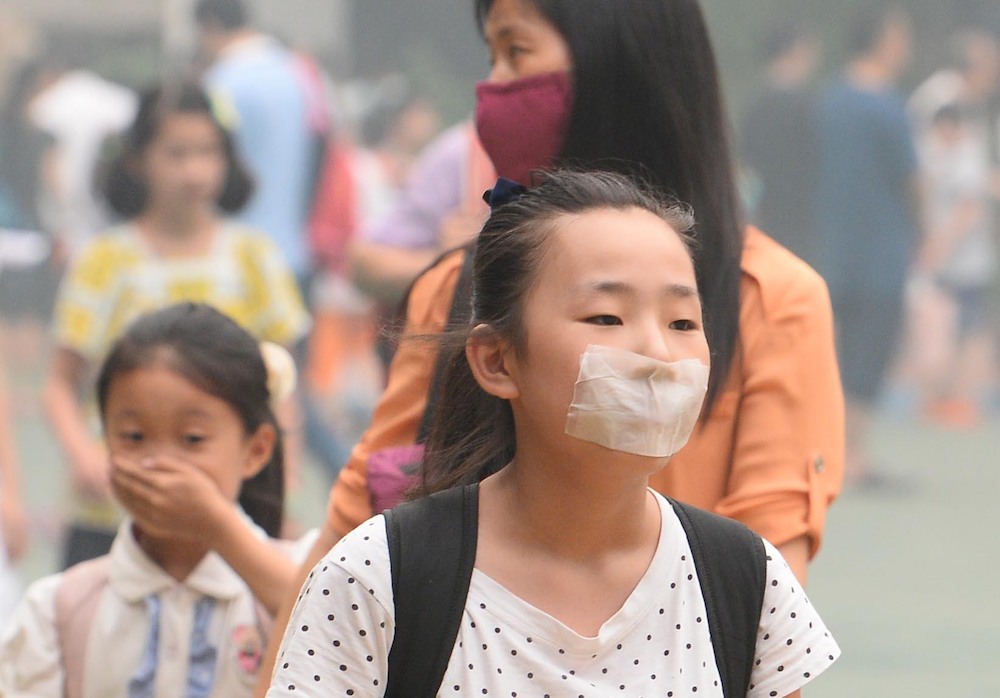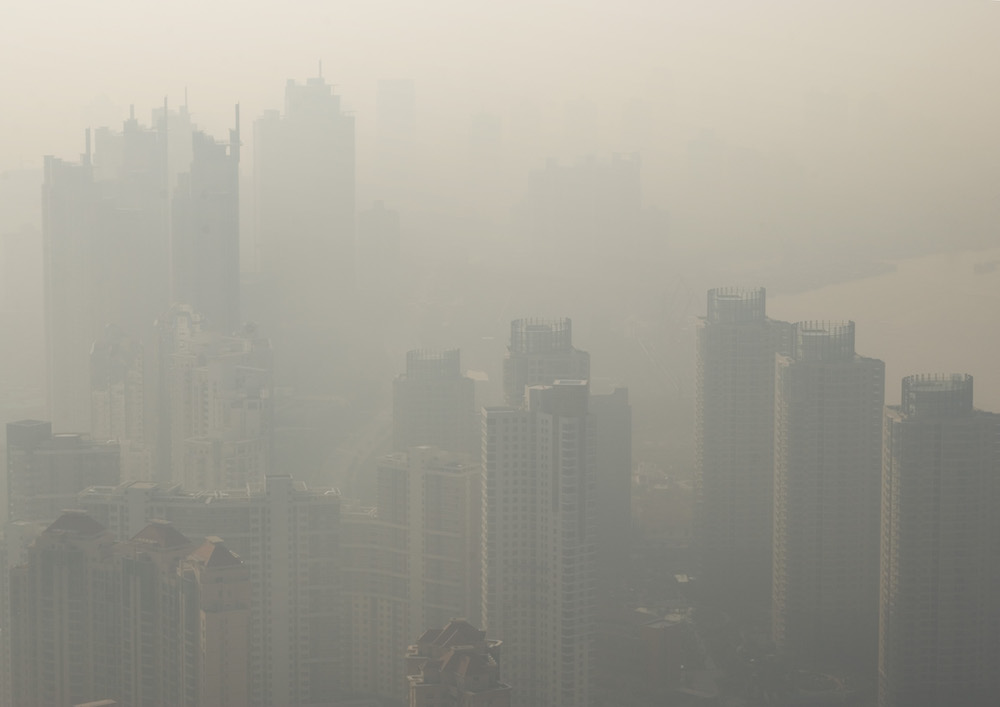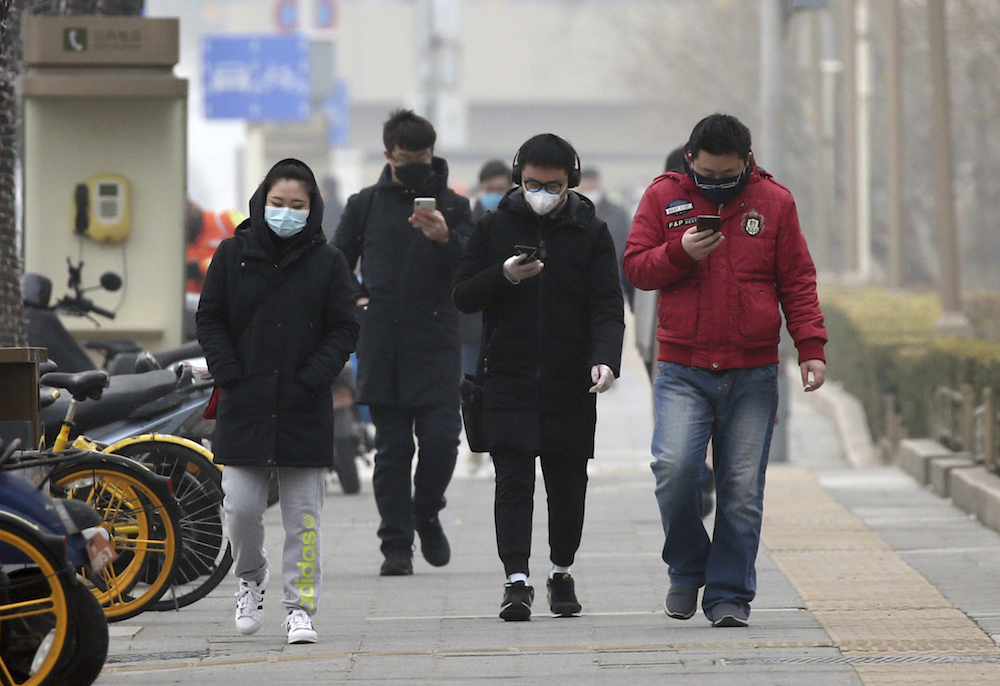Gasping for Air in the Time of COVID-19
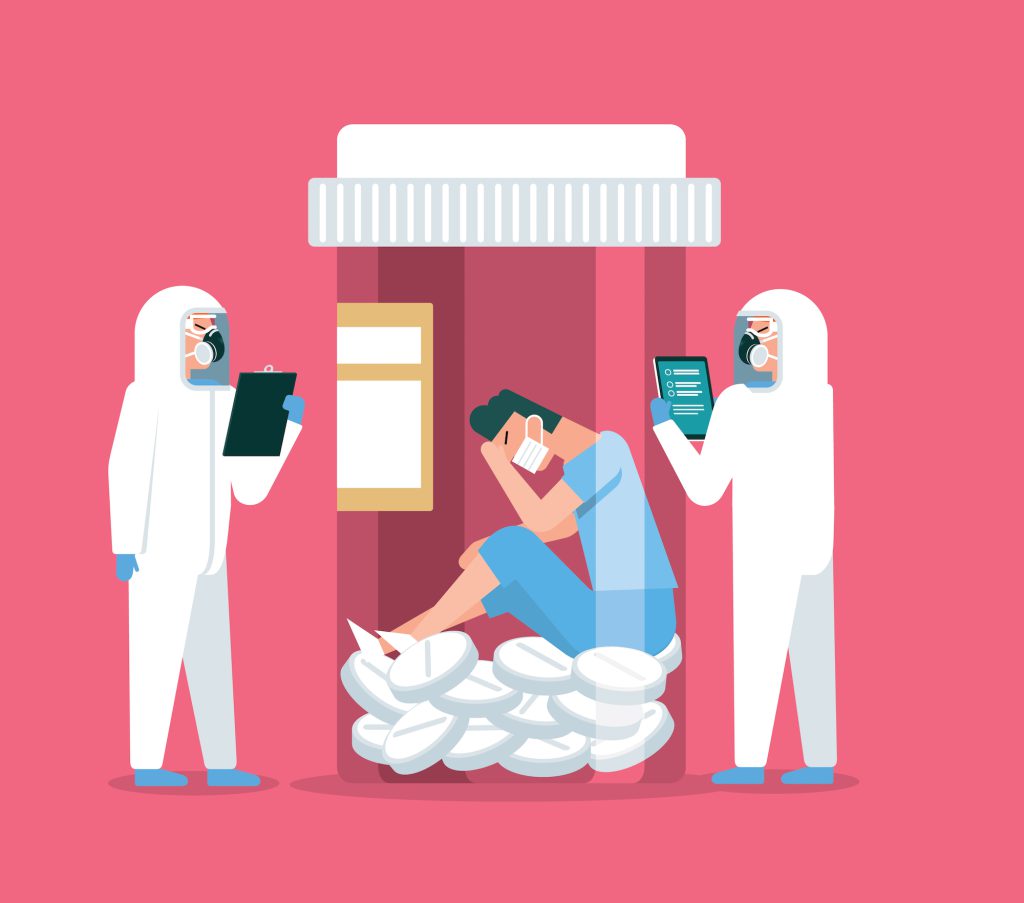
Panic about COVID-19, a novel flu-like disease that emerged in Wuhan, China, in December 2019, is rising around the world. U.S. universities are closing their campuses, French landmarks are shutting down, Italy has restricted movement throughout the entire country, and much travel between the U.S. and Europe has been suspended. But in China, the most populous country in the world, flights have been grounded, borders closed, schools shuttered, subways halted, restaurants emptied, and gatherings canceled for nearly two months now. Tens of millions of people remain cooped up in small apartments, waiting for something—anything—to change.
This crisis has led me to reflect on Chinese citizens’ inability to breathe—in both a literal and a figurative sense.
I am thinking not just of the more than 81,000 Chinese who have been infected with the virus, some of whom are struggling to breathe in the overburdened intensive care units of the country’s hospitals, but also of the hundreds of millions of Chinese citizens who have suffocated under the unprecedented lockdowns, desperate for some sort of clarity. And I am thinking, too, of the millions who, after a lifetime of breathing some of the most polluted air in the world, are now at a much greater risk of dying both from COVID-19 and from the more “ordinary” burdens of lung cancers, emphysema, and heart diseases they developed as a result of all that noxious air.
As an anthropologist who has spent the better part of the last two decades studying the aftermath of the 2002–2003 severe acute respiratory syndrome (SARS) epidemic, I feel at times that I am watching a horror film version of Groundhog Day. So many things, especially in China, are familiar. Just as there were after SARS 17 years ago, there are ubiquitous masks covering frightened faces. There are mass quarantines, new hospitals built in a matter of days, neighborhood watch systems to root out infected people, roadblocks at the entrances to villages, and fever guns at the border. Likewise, there is a familiar combination of international criticism (not “transparent” enough!) and praise (“bold” containment measures!) for the Chinese government, and the casual xenophobia that somehow always seems to express itself, at the start, through an unwillingness to frequent Chinese restaurants.
Still, despite the similarities, there really is something different this time around.
For one thing, the response to the national and global epidemic has restricted the Chinese people—and increasingly those outside China as well—to a much more extreme degree than SARS ever did. Hubei province currently has nearly 56 million people under strict quarantine—the same number of people living from Washington, D.C., to Maine. China’s checkpoints, shutdowns of public transportation, laws about when people are allowed to leave their homes even to obtain food, and requirements for obligatory medical tests are not just an inconvenience; they are a catastrophe. Collateral damage from such shutdowns includes massive destruction to the economy, loss of livelihoods for small business owners and migrant workers, and illness and even death for disabled and chronically ill people who have been stranded at home.
The virus itself also is different. SARS killed nearly 10 percent of those infected. While the exact fatality rate for COVID-19 is still unclear, it is likely far lower than this. But it is spreading fast. Partly because 80 percent of people have only mild symptoms, COVID-19 is harder to contain. And the world is different now too: The way we share information, and the expectations we have about that, have changed radically over the past decades.
So, will this outbreak, unlike ones before, lead to real change in China, clearing the air in more ways than one?
The inability to breathe is a terrifying experience. Air is our lifeblood. The average person can last a month without food, several days without water, but only minutes or even seconds without air. Perhaps this is partly why new respiratory viruses frighten people so much.
I personally have experienced the fear that viruses and suffocating lungs can bring. On April 12, 2003, at the height of the SARS epidemic, I was evacuated from my post teaching English in Guangzhou, a city of 13 million people located near that epidemic’s epicenter. Spooked by the spread of a mysterious new coronavirus, my sponsoring American program gave me five days to pack up two years of my life and leave.
I had no symptoms of SARS, no fever or cough, and had no contact with any SARS patients. In 2003, that was enough to officially put me in the clear: With SARS, there were no blanket travel bans or quarantines being instituted for travelers returning to the U.S. from China. I went, without restrictions, to live with friends in New York City.
Luckily, I did not have SARS. But I did notice a certain heaviness in my chest at times, particularly after exercising or on hot, humid days when the city air in New York was thick and rancid. I visited a pulmonologist, who listened to my lungs and had me blow into a tube.
“How long have you been a smoker?” he asked.
I had never been a smoker. He looked puzzled. My lung capacity, it seemed, was consistent with someone who had been smoking a pack a day for the last couple of years. Or, as it turns out, someone breathing Guangzhou’s air. I was sent home with an inhaler and instructions to stay out of urban China for a while.
Within a few months, my asthma symptoms abated, but the memory of suffocation—of that frightening feeling of heaviness that made it hard to breathe—lingered. When I returned to China a few years later as a graduate student, I was prepared with an inhaler and a generous supply of face masks.
Face masks have been a symbol of epidemics in China for over a century, since the Manchurian pneumonic plague epidemic of 1910–1911. But they are also an ordinary tool of Chinese urban living, donned on the worst air-quality days to protect residents’ lungs from a fate much worse than mine (although not all masks keep pollution at bay).
In a city like Wuhan, air pollution on the worst day exceeds New York City’s levels by 500 percent. Spend
Will this outbreak lead to real change in China, clearing the air in more ways than one?
enough time breathing that air and you will feel it in your lungs, like a growing weight that you cannot put down. Your eyes will water, your nasal secretions will turn gray, and in summer, a layer of grime will form on your skin that leaves a grayish-black residue under your fingernails.
While more than 8,000 people have died so far from COVID-19 globally, about half a million people die in China from lung cancer each year. That translates to a 38 percent greater chance of dying from lung cancer than in the United States. Higher smoking rates and reduced access to the most up-to-date treatments surely contribute to this disparity. But so do differences in air quality.
According to the World Health Organization, air pollution kills 4.2 million people each year and can explain 30 percent of lung cancer deaths, 25 percent of heart disease and stroke deaths, and 17 percent of deaths from acute lower respiratory infections—the category that includes deaths from COVID-19. In other words, when COVID-19 kills, it often does so with a lot of help from dirty air.
Images of the newly cleared skies arrive on my smartphone via social media. This is where hundreds of millions of Chinese citizens—cooped up at home with nothing better to do—spent their period of lockdown posting and sharing an explosion of information, disinformation, complaints, conjectures, and political discontent.
In figurative terms, the hazy internet behind China’s Great Firewall for a while experienced its own increase in blue-sky days. In spite of the best efforts of censors, exchanges about government failures to be transparent—which ordinary citizens had long accepted as an undesirable but unavoidable part of life—for a time dominated online and offline conversations in ways they rarely had before. As one friend currently holed up in his apartment in China told me, “People are finally realizing that it’s not just the virus that is causing this crisis, and they are saying so.” When censors deleted critical posts, people got creative. They reposted materials in different dialects and languages, and even read them aloud in what another Chinese friend referred to as “a kind of performance art.”
Back in 2003, the Chinese government was heavily criticized for failing to disclose information about SARS to the international community or to its own citizens. As I discuss in my book, Infectious Change, revelations about the outbreak and this “cover-up” greatly embarrassed the Chinese government, and Chinese leaders vowed greater transparency in the future. As part of a massive overhaul of the public health system, the central government developed a faster surveillance and reporting system for new diseases. Promises also were made to report this information to the international community so that a global response could be coordinated.
And yet this is not what happened—at least not at first. Global health experts have complained that the information the central government eventually released several weeks after the start of the outbreak was incomplete and failed to accurately portray the seriousness of the situation.
Transparency may not be as easy as it seems. Reporting a new disease brings very little benefit to local health professionals and may have serious repercussions for them personally and professionally, including causing economic and political repercussions for their local area. As seen with physician-turned-martyr Li Wenliang, who attempted to blow the whistle back in December and later died of COVID-19, individual doctors do not have the right in China to report cases of a novel disease directly to outside sources.
In 2020, however, Chinese citizens are increasingly unwilling to accept the kind of secrecy and opacity inherent in everything their government does. As they make their way through their third month of breathing in the dank air of enclosed spaces and the hot, wet, recirculated air that lies behind all those millions of masks, many Chinese are pushing to more permanently and thoroughly clear out the hazy air of their own information systems.
We do not yet know how this story will end. When the dust settles on COVID-19—when the lockdown is lifted, planes start flying, factories start churning, and the air starts graying—what lessons, if any, will be learned?
When SARS disappeared in July 2003, it quickly faded from global public memory, but it left behind a powerful legacy in China, remaking the public health system in service of preventing, or at least containing, another SARS-like epidemic.
As containment fails for this new virus, however, the state of Chinese lungs will likely cease to be of much interest globally. Already, attention to the dramatic events in China has faded as the disease makes its way through South Korea and Italy, and marches on to the Americas and beyond.
The narrative inside China is changing as well: In recent weeks, online censors have been catching up. The propaganda machine is showing signs of regaining strength, as public anger is redirected into nationalist pride at China’s apparently unique ability to enact brutally effective containment measures—whatever the costs. And while the blue skies are pretty, everyone is anxious to get China’s economy cranking again.
The COVID-19 epidemic eventually will clear, but it is unlikely to clear China’s air—or its channels of information—in the longer term. Whether the Chinese people will be motivated to pick up these causes themselves in the future remains to be seen.





























